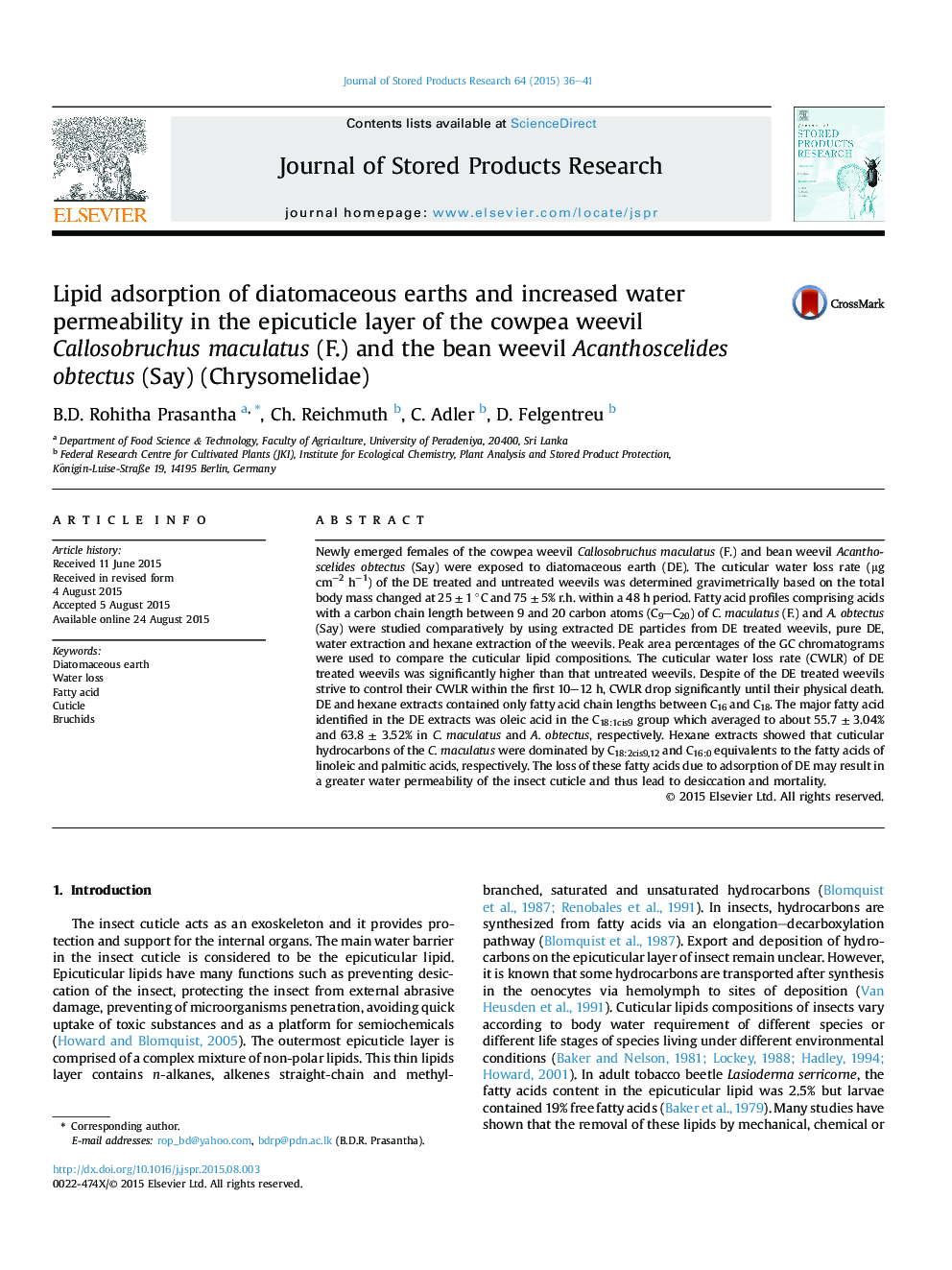| کد مقاله | کد نشریه | سال انتشار | مقاله انگلیسی | نسخه تمام متن |
|---|---|---|---|---|
| 4516943 | 1322511 | 2015 | 6 صفحه PDF | دانلود رایگان |

• DE particles adsorb epicuticular lipids within a short period of time.
• Weevils try to control their body water loss within the first 12 h.
• DE and hexane extracts contained fatty acid chain lengths between C16 and C18.
• Main fatty acid identified in the DE extracts was C18:1cis9 group.
• Cuticular water loss rate of DE treated weevils was significantly high.
Newly emerged females of the cowpea weevil Callosobruchus maculatus (F.) and bean weevil Acanthoscelides obtectus (Say) were exposed to diatomaceous earth (DE). The cuticular water loss rate (μg cm−2 h−1) of the DE treated and untreated weevils was determined gravimetrically based on the total body mass changed at 25 ± 1 °C and 75 ± 5% r.h. within a 48 h period. Fatty acid profiles comprising acids with a carbon chain length between 9 and 20 carbon atoms (C9–C20) of C. maculatus (F.) and A. obtectus (Say) were studied comparatively by using extracted DE particles from DE treated weevils, pure DE, water extraction and hexane extraction of the weevils. Peak area percentages of the GC chromatograms were used to compare the cuticular lipid compositions. The cuticular water loss rate (CWLR) of DE treated weevils was significantly higher than that untreated weevils. Despite of the DE treated weevils strive to control their CWLR within the first 10–12 h, CWLR drop significantly until their physical death. DE and hexane extracts contained only fatty acid chain lengths between C16 and C18. The major fatty acid identified in the DE extracts was oleic acid in the C18:1cis9 group which averaged to about 55.7 ± 3.04% and 63.8 ± 3.52% in C. maculatus and A. obtectus, respectively. Hexane extracts showed that cuticular hydrocarbons of the C. maculatus were dominated by C18:2cis9,12 and C16:0 equivalents to the fatty acids of linoleic and palmitic acids, respectively. The loss of these fatty acids due to adsorption of DE may result in a greater water permeability of the insect cuticle and thus lead to desiccation and mortality.
Figure optionsDownload as PowerPoint slide
Journal: Journal of Stored Products Research - Volume 64, Part A, October 2015, Pages 36–41